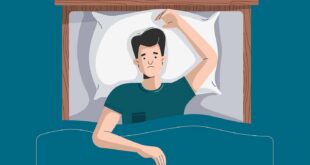Acute Anxiety, Tension Disorders.
Acute anxiety, fear, and tension are common problems.
We all experience these emotions when threatened or upset. Sometimes we can identify the cause
of the distress and consider it fear.
At other times, we are not aware of what is causing the problem. When anxiety, fear, and tension become uncomfortable or unbearable and a person seeks medical, psychological, or pharmacologic relief to
reduce the distress, we consider it to be clinical anxiety.
For such people presenting for treatment, it is appropriate to use the flowchart for clinical
diagnosis (Figure 3.1).
In this chapter we consider the patient who presents with acute anxiety or crisis and wants relief. The presenting symptoms may be associated with a troubled marriage, disturbed interpersonal relationships, difficulty at work, or a myriad of other problems.
Although short-term pharmacotherapy may be needed, the focus of therapy is to resolve the precipitating difficulty.
Resolution of the precipitating problem usually results in significant reduction in anxiety.
Incontrast, patients with the kinds of anxiety disorder discussed in the following three chapters, have more intense, sustained, and long- lasting symptoms of anxiety.
They may also have problematic marriages, or difficulties with other family and interpersonal relationships, or with sex, work, or self-image, but the anxiety seems to persist independent of the vicissitudes of these stressors, which are often easier to deal with once the patient has symptomatic relief.
The patient feels anxious, tense, nervous; he is preoccupied and worried and ruminates about some, perhaps, indefinable problem; he may appear worried, with a furrowed brow or tense muscles; he may sweat excessively and have trouble sleeping and concentrating.
In many cases, the symptomology of acute anxiety disorders differs from chronic problems (such as
generalized anxiety disorder) only in length and in having an apparent cause.
It is usually not possible to determine when an acute problem will become chronic, but most acute anxiety and tension disorders resolve within six months.
These patients do not have frequent panic attacks, avoidance, obsessive rituals, or social fears, and the anxiety is not due to organic problems or trauma.
The remainder of this chapter will focus on the treatment of acute crises.
Patients presenting with acute anxiety/tension can be diagnosed under DSM-III-R criteria as having an adjustment disorder with anxious mood, if they appear to have a reaction to an identifiable psychosocial stressor(s) that occurs within three months of the onset of the stressors, psychosocial impairment, and
predominant symptoms such as nervousness, worry, and jitteriness.
Impairment and symptoms must be in excess of a “normal and expectable reaction to the stressor(s)” (APA, 1987) a qualification that is difficult to make.
Patients can be diagnosed under DSM-III-R as having a phase of life problem or other life circumstance problem if they are not impaired in social or occupational functioning or do not have symptoms that appear in excess of a normal and expectable reaction to the stressor.
There are three therapeutic approaches to resolving symptoms associated with acute anxiety/tension: crisis management, brief psychotherapy, and pharmacotherapy. Crisis management is a shortterm process designed to help people resolve acute problems or return to their normal level of functioning through the use of personal, social, and environmental resources.
The goal is to restore equilibrium, and the assumption is that the person has adequate methods and resources for coping, with some outside support.
Crisis management is appropriate for individuals who have suddenly lost their ability to deal with with
a life situation. Short-term or brief psychotherapy is also focused on removing specific symptoms through support, insight, and the acquisition of new skills and coping methods.
Pharmacotherapy should be used only if the patient is severely impaired by the symptoms and only for a brief period.
 Therapy for anxiety Therapy for anxiety
Therapy for anxiety Therapy for anxiety



